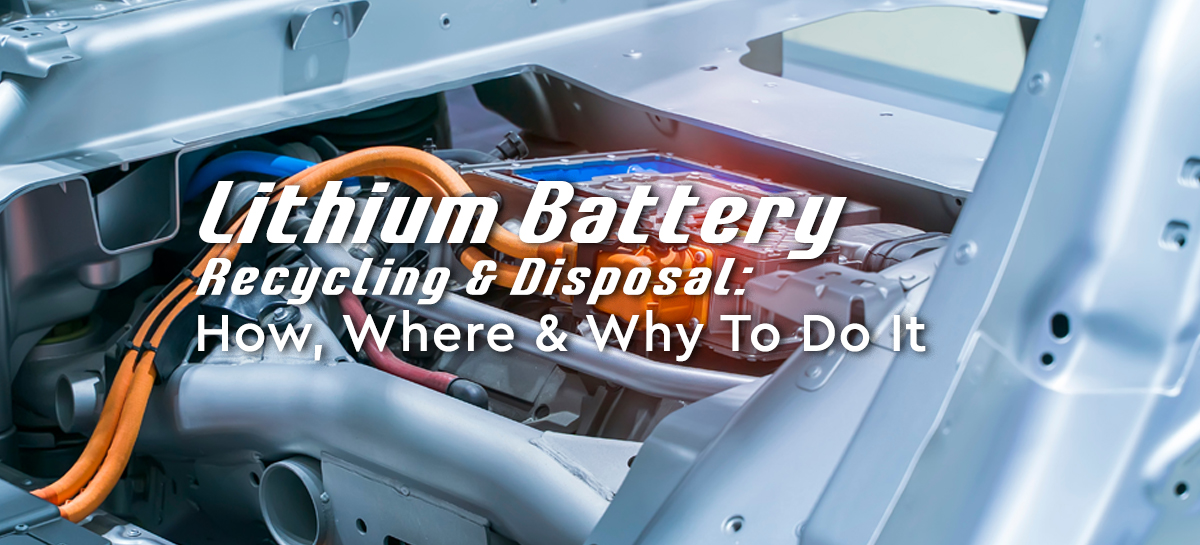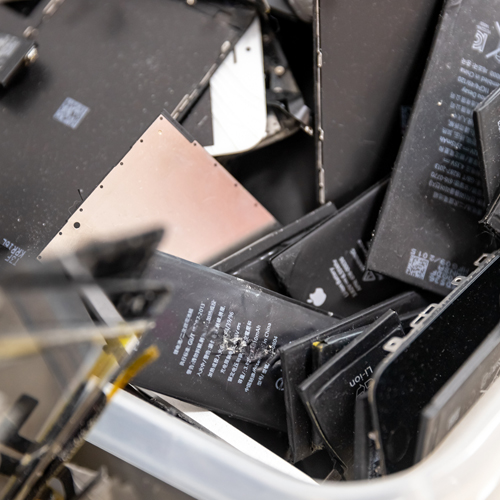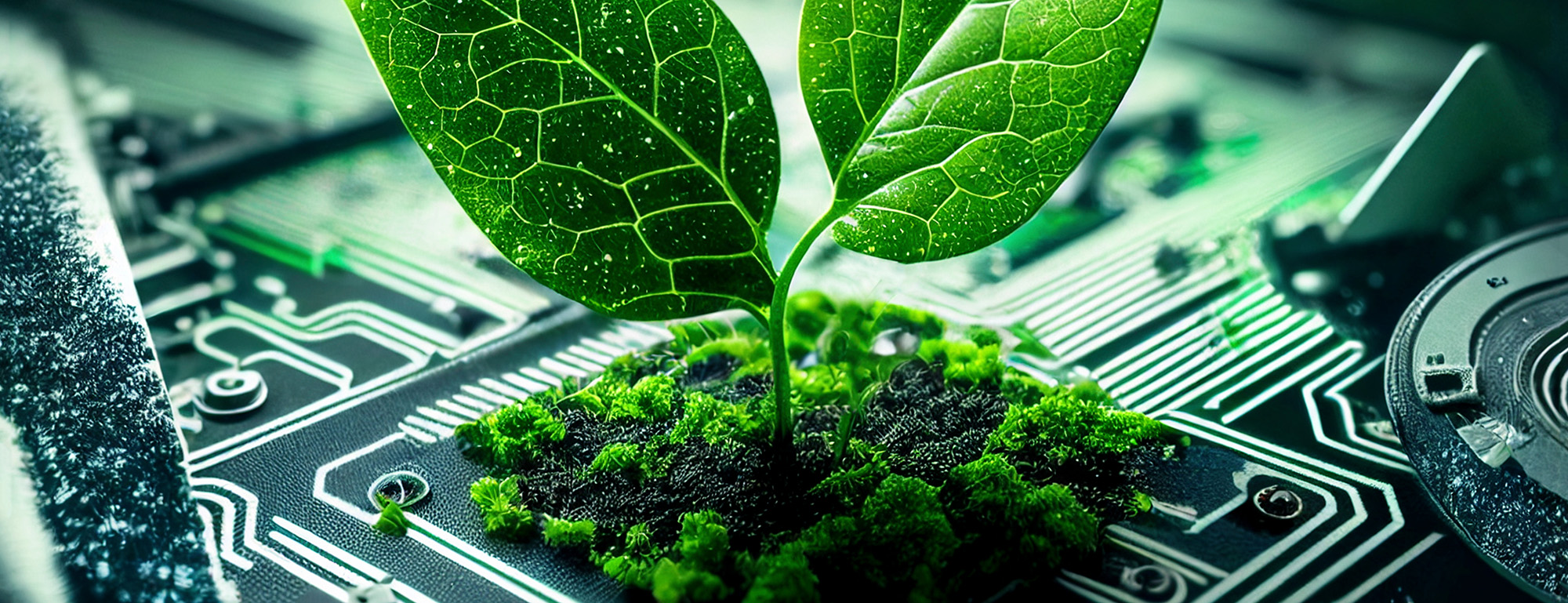Lithium Battery Recycling & Disposal: How, Where & Why To Do It
There’s no doubt that lithium-ion batteries have revolutionized the way we use and store energy.
However, with the increasing use of these batteries, the need for proper lithium battery recycling has become increasingly important.
So, can lithium batteries be recycled efficiently, or are we doomed to lithium battery disposal methods that will be the downfall of our environment and economy?
Join us as we explore this hot topic further!
Firstly, can lithium batteries be recycled?
Yes, lithium batteries can be recycled. Lithium-ion batteries contain valuable metals, such as cobalt, nickel, and lithium, that can be recovered and used to produce new batteries or other products. Lithium battery recycling also helps reduce the demand for new resources, reduces waste, and reduces the environmental impact of battery production.
Why the world needs to crack battery recycling, fast
With 11 million metric tons of lithium ion batteries expected to reach the end of their lives from now to 2030, the worrying implications of not recycling lithium batteries are significant and far-reaching:
1. Environmental impact
The toxic and hazardous cobalt, nickel, and lithium in lithium-ion batteries can harm the environment if not properly disposed of or recycled.
This harm comes from when the toxic materials can leach into the soil and groundwater as a result of NOT being recycled.
2. Limited natural resources
The demand for lithium and other metals used in batteries is increasing as the use of electric vehicles and other battery-powered devices grows.
If these batteries aren’t recycled, the demand for new metals from mining and refining will continue to increase, putting a strain on limited natural resources.
3. Economic impact
Failing to recycle lithium batteries can result in higher costs for producing new batteries as the demand for new metals from mining and refining will increase.
This can lead to higher costs for consumers and decreased competitiveness for battery manufacturers.
As you can see, it’s essential to develop effective and efficient recycling methods for these batteries to reduce their environmental, economic, and resource impacts.
But, what are the benefits to you of recycling a li-ion battery?
Lithium battery recycling benefits
The benefits of lithium battery recycling are:
- Conservation of resources: Recycling lithium batteries conserves the raw materials used to produce them, reducing the demand for new resources.
- Reduction of waste & environmental impact: Lithium batteries that are recycled do not end up in landfills, reducing the amount of waste and environmental pollution, due to their toxic chemical components.
- Energy savings: Recycling lithium batteries uses less energy than producing new batteries, reducing the carbon footprint of the battery production process.
- Economic benefits: Lithium battery recycling creates jobs and generates revenue for the recycling industry.
- New products: Recycled lithium-ion batteries can be used to produce new batteries or other products, such as metal alloys, reducing the need for virgin materials.
Prioritizing recycling is crucial for a safe and sustainable future. With this in mind, our UN bags represent an excellent solution that meets all UN safety requirements.
How are lithium batteries recycled?
The choice of lithium-ion battery recycling methods depends on three main factors:
- Battery type
- Component composition
- Desired end products
All of the below recycling processes are typically carried out by specialized recycling facilities, and the recovered metals can be used to produce new batteries, metal alloys, or other products.
The current technologies to recycle li-ion batteries are:
1. Hydrometallurgical processes
This involves the use of chemical processes to recover the metals from the battery components. It’s commonly used to recover cobalt, nickel, and lithium from the battery cathode.
2. Pyrometallurgy
Pyrometallurgy uses high temperatures to melt the battery components, separating the metals and other materials.
It’s a common method to recover metals such as aluminum and copper from the battery casing.
3. Mechanical
Mechanical recycling physically breaks down the battery components and separates the metals using various methods, such as:
- Gravity separation
- Magnetic separation
- Air classification
4. Solvent extraction
Here, recyclers use solvents to dissolve the metals from the battery components, which are then separated and recovered.
It’s most commonly used to recover cobalt and nickel from the battery cathode.
Are recycled lithium batteries as good as newly mined ones? This study says “yes”
The quality of recycled lithium batteries compared to newly mined ones can vary depending on the recycling method used and the condition of the batteries being recycled.
However, in general, recycled lithium batteries can have similar performance and quality as newly mined ones making them a viable option for the production of new batteries.
According to a study by the United States Department of Energy’s Argonne National Laboratory, the quality of recycled lithium-ion battery materials, such as cobalt and nickel, is similar to that of newly mined materials.
The study also found that the performance and quality of the recycled materials meant they could be used in the production of new batteries with similar performance and quality.
So, what does the future of lithium battery recycling look like?
There are several future technological possibilities for lithium battery recycling:
1. Advanced recycling methods
Recyclers are exploring new and innovative methods for recycling lithium batteries, including hydrometallurgical and pyrometallurgical processes, solvent extraction, and mechanical processes.
These new methods may be more efficient and cost-effective, and they may be able to recover a higher percentage of metals from the batteries.
Initial results from these recycling processes are promising, giving hope for even more emerging and “green” recycling techniques.
2. Advanced sorting methods
Companies are developing advanced sorting methods that can accurately and efficiently sort different types of lithium batteries, allowing for more efficient and effective recycling:
- X-ray fluorescence (XRF): This uses X-rays to analyze the chemical composition of batteries to then accurately sort different types of lithium batteries based on their metal content.
- Near-infrared (NIR) spectroscopy: Near-infrared light is used to identify and sort different types of lithium batteries based on their chemical composition.
- Laser-induced breakdown spectroscopy (LIBS): Laser pulses vaporize the battery’s surface, with the resulting plasma analyzed to determine the battery’s chemical composition.
- Magnetic: Here, magnetic fields are used to sort lithium batteries based on their magnetic properties, which can be correlated with their chemical composition.
- Computer vision sorting: This method uses machine-learning algorithms to analyze images of batteries and classify them based on their visual features.
3. Recycling battery components
One of the keys to continuous improvement for the recycling industry is to ensure ALL battery components are recycled effectively and efficiently.
More specifically, the casing, separator, and electrolyte, in addition to the metals.
The casing of a lithium-ion battery is typically made of plastic, which can be recycled through traditional plastic recycling processes. Some battery manufacturers also offer take-back programs where they will recycle the battery casing and other components.
In comparison, the separator, which is typically made of a polymer material, can be recycled by breaking it down into its constituent materials and then reusing those materials to produce new products.
Furthermore, the electrolyte in lithium-ion batteries can be recycled by extracting valuable materials (lithium and cobalt) and then using those materials to produce new batteries or other products.
The remaining electrolyte can be treated to remove impurities and then be reused in new battery production.
4. Circular economy models
Circular economy models for lithium batteries involve designing and implementing processes to keep materials and resources in use for as long as possible while minimizing waste and reducing the need for new raw materials.
Here are some examples of circular economy models for lithium batteries:
Closed-loop recycling
This is the main theme we’ve touched on already in this article. Collecting used lithium batteries, processing them to extract valuable materials, and then using those materials to manufacture new batteries.
By keeping materials in use and minimizing waste, this model reduces the environmental impact of battery production.
Remanufacturing
Remanufacturing is refurbishing used batteries and returning them to the market for reuse.
This can be done by replacing worn-out parts or reconfiguring the battery to work with different devices. Remanufacturing extends the lifespan of batteries and reduces the need for new battery production.
Battery leasing
Battery leasing essentially involves leasing batteries to customers, rather than selling them outright.
At the end of the battery’s useful life, the leasing company takes back the battery and either refurbishes it for reuse or recycles it to extract valuable materials.
This encourages manufacturers to design longer-lasting batteries, and can reduce the amount of battery waste generated.
Design for recyclability
Instead of designing batteries and then trying to recycle them as an afterthought, this model involves designing batteries with recycling in mind.
For example, using standardized battery components or materials that are easy to separate can make the recycling process more efficient and effective.
Implementing circular economy models for lithium batteries requires collaboration across the entire value chain, from battery manufacturers and suppliers to end-users and recyclers.
By working together, stakeholders can create a more sustainable and resource-efficient battery industry.
Lithium battery disposal methods we should avoid
When looking into the possibilities of where to dispose of lithium batteries, these are the options you should avoid:
Disposal of lithium batteries in landfills
The pros and cons of disposing of lithium batteries in landfills are as follows:
Pros:
- Convenience: Landfills are easily accessible, making them a convenient disposal method for many organizations, rightly or wrongly.
- Cost-effective: It’s also a relatively cheap method of disposing of lithium batteries, making it appealing for those who are looking to reduce costs.
Cons:
- Environmental hazards: The toxic chemicals within can leach into the soil and groundwater when disposed of in a landfill. This results in environmental pollution and potential harm to human health and wildlife.
- Fire risk: Even though this is only a risk due to a manufacturing anomaly, lithium batteries have the potential to catch fire, which could result in dangerous fires in a landfill.
- Non-renewable resources: Landfilling lithium batteries contributes to the depletion of non-renewable resources as these batteries aren’t being recycled and their materials aren’t being reused.
Incineration of used lithium batteries
Pros:
- Efficient: Incineration is a fast and efficient way to dispose of large quantities of lithium batteries.
- Volume reduction: The incineration process reduces waste material volumes, making it easier to transport and manage.
- Energy recovery: Incineration can recover energy from the waste material, reducing the need for fossil fuels and reducing greenhouse gas emissions.
Cons:
- Environmental impact/air pollution: Incineration releases toxic gases and particles into the atmosphere, such as hydrogen chloride and sulfur dioxide, which can harm human health and the environment.
- Waste of resources: It destroys valuable materials that could be recycled, reducing the potential for resource recovery.
- High cost: The process of incineration is expensive and requires specialized facilities, making it difficult for communities to manage their waste.
- Safety concerns: The flammable nature of lithium batteries and the potential for explosions make incineration a dangerous method of disposal.
Overall, while incineration of lithium battery waste may be a viable option in some cases, it should be used with caution and considered as a last resort.
Recycling is a more environmentally friendly and sustainable option for lithium battery disposal.
Storage for future disposal or recycling
The pros and cons of storing lithium batteries until a proper disposal method becomes available are:
Pros:
- Safety: Storing the batteries in a secure location reduces the risk of fire or explosion.
- Convenience: It’s a simple and easy method of disposal until a proper method becomes available.
Cons:
- Environmental impact: If the batteries aren’t stored properly, they can leak harmful chemicals into the environment.
- Limited lifespan: Lithium batteries have a limited lifespan and can deteriorate over time, becoming hazardous if they aren’t then disposed of properly.
- Space constraints: Storing large quantities of batteries can take up a lot of space, which may not be available.
- Cost: The cost of storing the batteries can be high, especially if they need to be stored in a secure location or if proper storage containers need to be purchased.
Storing lithium batteries until a proper disposal method becomes available can be a temporary solution but not a long-term one as it can have negative environmental impacts and costs.
While recycling methods should be prioritized for a safe and sustainable future, our UN-approved bulk bags are an excellent solution that pass all UN safety requirements.
Where to recycle lithium batteries
So, we’ve covered what is good and bad among our options for recycling and disposing, but do you know what to do with old lithium batteries once you’re done with them?
Whether you need to recycle cell phone batteries or you are bulk recycling for a business, here is some general information on sticking with a responsible method of recycling:
Businesses
The list further down for the general public is also applicable to businesses, but you could also recycle lithium batteries for cash:
Lithium battery recycling for cash
Businesses can get cash for recycling lithium batteries by selling the recovered metals to metal recycling companies.
Here are a few steps businesses can follow to get cash for recycling lithium batteries:
- Find a reputable recycling company: Search for a recycling company that specializes in lithium battery recycling and has a good reputation for paying fair prices for the recovered metals.
- Preparation: Preparing the batteries for recycling usually involves removing them from devices, sorting them by type, and packaging them for transportation.
- Transportation: The prepared batteries need to be transported to the recycling facility, which can be done by the recycling company or by the business (see our transporting lithium batteries guide for more on this).
- Sell the recovered metals: The recycling company will process the batteries and recover the metals, which can then be sold to metal recycling companies. The price of the metals will depend on market conditions and the quantity and quality of the recovered metals.
It’s important to note that the process of recycling lithium batteries can be complex, and it is important to work with a reputable recycling company that has the experience and equipment to handle the batteries safely and efficiently.
The general public
The general public can recycle their used lithium batteries at several locations, including:
- Local recycling centers: Many local recycling centers offer general battery recycling services, including lithium battery recycling. Contact your local recycling center to see if they accept lithium batteries.
- Retail stores: Some retail stores, such as electronics and home improvement stores, offer lithium battery recycling.
- Electronic waste recycling facilities: Contact your local electronic waste recycling facility to see if it accepts lithium batteries.
- Battery recycling companies: Battery recycling companies that specialize in lithium battery recycling have the equipment and expertise to handle the safe and efficient processing of the batteries.
Note that not all recycling facilities accept lithium batteries, and some may have restrictions on the types of batteries they accept. You should contact the recycling facilities to confirm their policies and procedures for accepting lithium batteries.
Is your business recycling lithium batteries? Here’s how Palmetto can help
Do you recycle batteries? If so, consider using our UN-certified FIBCs to safely store your lithium batteries before recycling.
These containers are designed to provide a secure and protective environment for your batteries during storage, reducing the risk of damage or injury.
By investing in proper storage solutions, you can help ensure that your batteries are properly recycled, making a positive impact on the environment.
FAQs
Can lithium car batteries be recycled?
Yes, lithium car batteries can be recycled. Like other lithium batteries, they contain valuable metals, such as cobalt, nickel, and lithium, that can be recovered and reused through the recycling process. Properly recycling lithium car batteries can also reduce the environmental impact of these batteries.
How long does it take for batteries to decompose?
Lithium batteries can take hundreds of years to decompose. The exact time depends on the specific type of battery and the environmental conditions. This highlights the importance of properly disposing of and recycling lithium batteries to reduce their environmental impact.
How many batteries are thrown away each year?
According to the Environmental Protection Agency (EPA), over 3 billion batteries are thrown away each year in the United States alone. This creates a significant environmental impact as batteries contain toxic and hazardous materials that can harm the environment if not properly disposed of or recycled.











